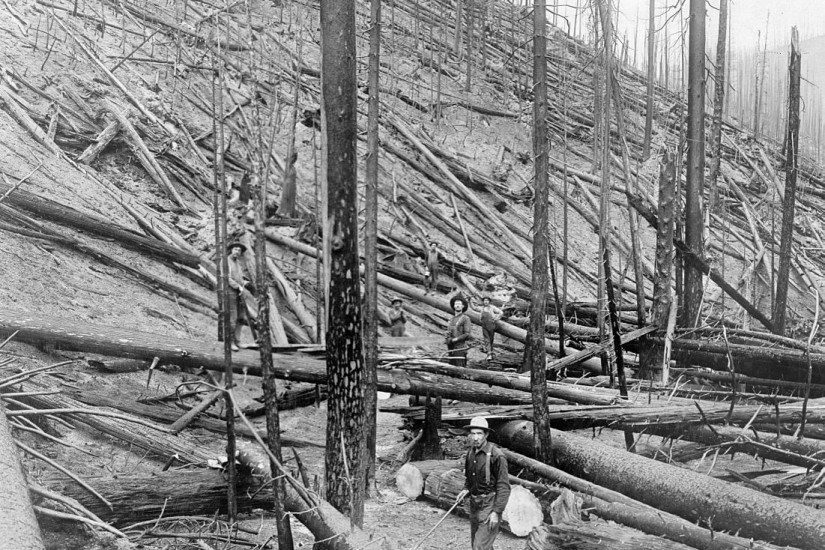One part of the story begins with a 1910 wildfire, known as the Big Burn, that blackened three million acres in Idaho, Montana, and Washington and killed eighty-seven people, most of them firefighters. Horror stories from the Big Burn seized the national imagination, and Theodore Roosevelt, wearing his conservationist’s hat, used the catastrophe to promote the Forest Service, which was then new and already besieged by business interests opposed to public management of valuable woodlands. The Forest Service was suddenly, it seemed, a band of heroic firefighters. Its budget and mission required expansion to prevent another inferno.
The Forest Service, no longer just a land steward, became the federal fire department for the nation’s wildlands. Its policy was total suppression of fires—what became known as the 10 AM rule. Any reported fire would be put out by 10 AM the next day, if possible. Some experienced foresters saw problems with this policy. It spoke soothingly to public fears, but periodic lightning-strike fires are an important feature of many ecosystems, particularly in the American West. Some “light burning,” they suggested, would at least be needed to prevent major fires. William Greeley, the chief of the Forest Service in the 1920s, dismissed this idea as “Paiute forestry.”
But Native Americans had used seasonal burning for many purposes, including hunting, clearing trails, managing crops, stimulating new plant growth, and fireproofing areas around their settlements. The North American “wilderness” encountered by white explorers and early settlers was in many cases already a heavily managed, deliberately diversified landscape. The total suppression policy of the Forest Service and its allies (the National Park Service, for instance) was exceptionally successful, reducing burned acreage by 90 percent, and thus remaking the landscape again—creating what Paul Hessburg, a research ecologist at the Forest Service, calls an “epidemic of trees.”
Preserving trees was not, however, the goal of the Forest Service, which worked closely with timber companies to clear-cut enormous swaths of old-growth forest. (Greeley, when he left public service, joined the timber barons.) The idea was to harvest the old trees and replace them with more efficiently managed and profitable forests. This created a dramatically more flammable landscape. Brush and woodland understory were no longer being cleared by periodic wildfires, and the trees in second-growth forest lacked the thick, fire-adapted bark of their old-growth predecessors.
